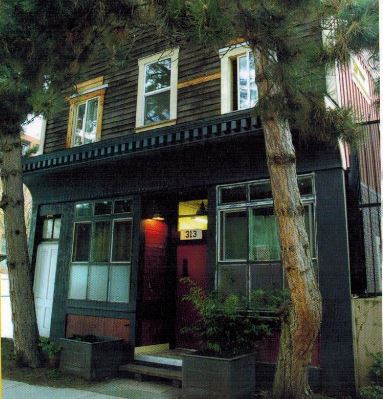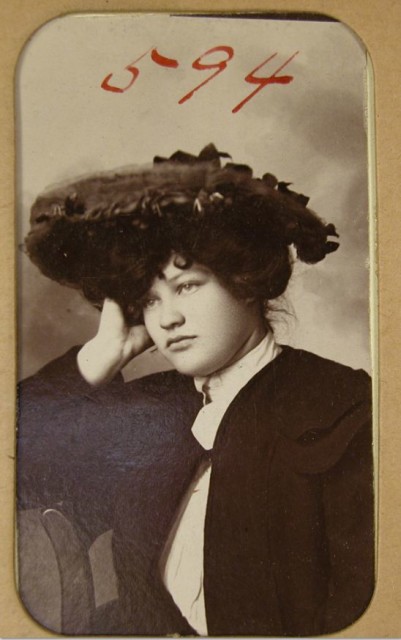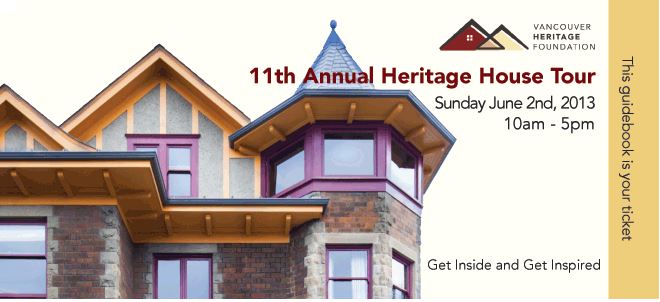There are some beautiful homes on the Vancouver Heritage House Tour this year—a couple of old Shaughnessy manors, a quirky turreted terra cotta and stone house in Mount Pleasant, and a colorful Edwardian on Kitchener Street, but the one I am most interested in is a tenement building in the DTES.

The house at 313 Alexander Street first appears in the city directories in 1907 built for Yonekichi Aoki, and listed as a Japanese boarding house. Aoki was a contractor for the CPR, and this area near Powell Street was part of a bustling Japan town district.
By 1912 the area was changing as madams were chased out of Dupont Street (East Pender), bounced through Shanghai and Canton Alley, and evicted from Shore Street (100 block East Georgia). Alexander Street—especially the 500 and 600 blocks—became Vancouver’s flashy new red light district.
I wrote about the Alexander Street brothels in Sensational Vancouver.

Brothels went up at a rapid pace, either bought or built by madams such as Dolly Darlington (500 Alexander), Lucille Gray (504 Alexander) and Alice Bernard (514 Alexander). Marie Gomez even had her name spelled out in mosaic tile inside the door at 598 Alexander, unfortunately now a vacant lot. The brothels were luxuriously decorated and furnished, the prostitutes beautifully dressed, and the work earned the “inmates” a liveable income, something almost impossible to achieve as domestics, seamstresses or florists—a few of the only jobs open to women.
A police crackdown on the brothels in 1914 gave the madams—who were mostly American—the choice between six months in prison or a return to the States—and prostitution quickly disappeared from the area.
The boarding house at 313 Alexander stayed in the Aoki family until WW2 when the Japanese were interned and their properties confiscated.
Charles Haynes, a West Vancouver architect, bought the building in 2006 and proceeded to renovate 24 rooms into Single Room Accommodation as a tribute to his son Ross, 19, who died from a drug overdose in 2000. The original fir floors, tongue & groove panelling still remain, as well as the ghost lines of several doors that led from a room now used as a kitchen, leading to speculation that it may have been part of the red light district.
The 11th Annual Heritage House Tour is on Sunday June 2 from 10 am to 5 pm. Tickets are $40 and available through the Vancouver Heritage Foundation.
© All rights reserved. Unless otherwise indicated, all blog content copyright Eve Lazarus.





6 comments on “Vancouver’s Early Red Light District and the Heritage House Tour”
The American Can Company is actually built on the site of a number of houses that once stood on the north side of Alexander. Many of these were once used as brothels during the time when the 500 and 600 blocks of Alexander formed the nucleus of a thriving Red Light District. Vancouver’s oldest red light district was on the unit and 10-block of Dupont Street, now East Pender, and then was relocated to Canton and Shangai Alleys for a while before relocating to Shore Street (100 block of Harris, now East Georgia) before finally relocating to Alexander Street beside the port in the 1910s. A number of the buildings that still stand on Alexander were originally built as brothels. Some of the madams actually had their names spelled out in tiles outside their front doors.
[…] from a distance, but the few purpose-built brothels that have survived as low-income housing on Alexander Street give us an idea of how the building likely differed from similar […]
[…] The house first appears in the city directories in 1907 and was built for Yonekichi Aoki, a contractor for the Canadian Pacific Railway, according to a blog by Vancouver writer Eve Lazarus. […]
[…] The house first appears in the city directories in 1907 and was built for Yonekichi Aoki, a contractor for the Canadian Pacific Railway, according to a blog by Vancouver writer Eve Lazarus. […]
[…] The house first appears in the city directories in 1907 and was built for Yonekichi Aoki, a contractor for the Canadian Pacific Railway, according to a blog by Vancouver writer Eve Lazarus. […]
[…] The house first appears in the city directories in 1907 and was built for Yonekichi Aoki, a contractor for the Canadian Pacific Railway, according to a blog by Vancouver writer Eve Lazarus. […]